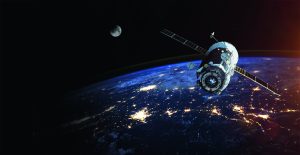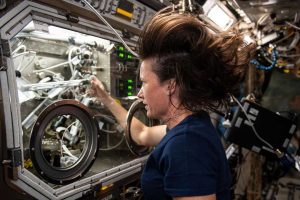
One of the biggest changes in space exploration in the past decade is that it is being driven not by governments but by private businesses and billionaire entrepreneurs.
This is fuelling explosive growth, with space missions now commonplace. For example, SpaceX carried out more than one voyage a week in 2022. Industry-wide, recent innovations have included building the next generation of reusable rockets, scaling low Earth orbit communication satellites and reaching planets deeper in the solar system with the ultimate goal to send humans to Mars. To realise these goals, however, requires the ability to confirm that technology will perform as expected.
The harsh environment of space is the ultimate challenge for technology, from surviving the force of the launch, the vast temperature fluctuations, the impact of radiation while orbiting, communication challenges and negotiating the volume of debris in space. These hurdles cannot be underestimated. Hardware and software must be durable enough to withstand these pressures and continue working as expected.
Space and software
Space equipment and technology are extremely complex and are increasingly dependent on software. For example, in the 1970s, satellites had little to no software compared to the satellite mega-constellations that are currently deployed, which rely on software-driven services to communicate.

Ensuring these technologies are tested rigorously to perform reliably in every possible scenario is critical. The sheer volume of code means manual testing is not viable for reasons including complexity, cost and time.
Deploying AI-driven software automation ensures technology is ready for space. Intelligent automated testing can provide insights into the readiness for launch and orbit. While the ability to quickly and thoroughly test every potential scenario is critical, the intelligence helps teams identify where potential issues are most likely to occur and remediate these before the physical launch happens. This approach ensures that the software and technology deliver the required outcomes.
Testing the user experience
Testing code compliance is not enough in any setting, and especially not in the harsh environment of space. Using automated testing to view through the eyes of the user – alongside the entire user experience, functionality, performance and usability – means that tests reflect exactly what the user does. For example, it is mission-critical to evaluate how the systems work together and understand the human spaceflight. This requires understanding the human operator console to ensure that what is being shown to the operators at mission control is the same as that sent from space. When humans are on board, the interactive systems must provide robust and accurate information that is easy to interpret visually. For example, the data might be correct, but if a user interface panel obscures the information or values are cropped, that needs to be identified and fixed before the spacecraft is in orbit.
AI-driven testing also rapidly accelerates the development of technology advancements. This can be crucial in the space race where being first to market has significant financial benefits. The testing can easily scale as the technology matures and more complexity is embedded to keep pace with rapid growth and innovation. Both businesses and government agencies are increasingly adopting automated testing to ensure the software delivers what is needed.
One example of this is at Nasa, which has integrated Keysight Technologies’ Eggplant intelligent automation platform to test the software in the Orion spacecraft under different scenarios.
Eggplant is a model-based digital twin testing that uses AI to extend coverage and speed release cycles for quality assurance. It is designed to test any kind of software on any platform or device.
To monitor the status of the spaceflight and provide instructions to the crew, the cockpit has software-based digital displays replacing the legacy approach of using vast amounts of paper documentation. The end result is a significantly more efficient and thorough way to test the entire lifecycle with testing continuing while the Orion is in orbit to monitor the status and to control the spaceship if an emergency occurs.
 Electronics Weekly Electronics Design & Components Tech News
Electronics Weekly Electronics Design & Components Tech News



